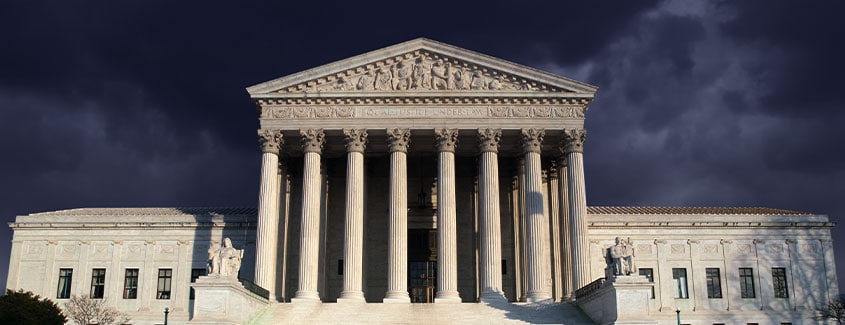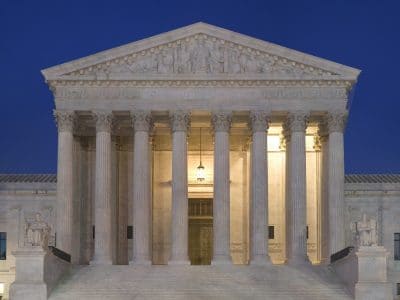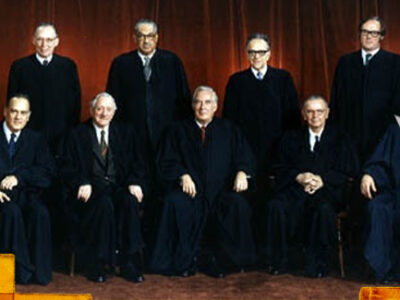
Editor’s note: This article first appeared at The American Spectator.
Retired Associate Justice of the U.S. Supreme Court, Sandra Day O’Connor died Dec. 1 in her home state of Arizona, at the age of 93. Justice O’Connor was the first woman to serve as a Supreme Court justice, a signal honor. Nominated by President Ronald Reagan in 1981, she served for 24 years and retired to take care of her husband, who was suffering from Alzheimer’s disease, ironically the same disease that afflicted her later in life and led to her death.
Her appointment by Reagan fulfilled a campaign promise he had made to appoint a woman to the highest court. There were concerns expressed about her relative lack of appellate court experience — she had served just two years as a judge on the Arizona Court of Appeals. More vocal were pro-life supporters who questioned her views on abortion. However, Reagan was satisfied, and the Senate vote to confirm her was unanimous.
As a justice, O’Connor disappointed and perplexed conservatives on a number of issues over the years — the most noteworthy undoubtedly being in Planned Parenthood v. Casey. Casey arose from certain Pennsylvania regulations aimed at controlling access to abortion. Among others, the regulations required a 24-hour waiting period before abortion, parental consent for minors, and spousal notification for a married woman. The case gave the court, with an arguably more conservative makeup than 20 years earlier, an opportunity to revisit Roe v. Wade and possibly overturn it.
No doubt Chief Justice William Rehnquist and Justices Antonin Scalia, Clarence Thomas, and Byron White viewed Roe as wrongly decided. More than two decades of litigation about restrictions on abortion plus new science on neo-natal life raised serious questions about the workability of Roe. All that was needed was one more justice to join those four. The two likely to help were Anthony Kennedy, another Reagan appointment, and David Souter, appointed by George H.W. Bush. But the most probable was O’Connor, who had given Reagan assurances that she was pro-life.
Instead, O’Connor wrote the opinion of the court, together with Kennedy and Souter, that upheld the essential holding of Roe — abortion as a fundamental right — and then crafted a new legal formula supposedly offered to settle the question of whether certain state abortion regulations were allowable under Roe. The new formula, used in an earlier concurring opinion by O’Connor (Akron v. Akron Center for Reproductive Health), depended on whether the regulation placed an “undue burden” on the woman seeking an abortion. The test was vague in its application and resulted in three more decades of abortions and uncertainty about Roe’s legitimacy before it was overturned by Dobbs v. Jackson Women’s Health Organization.
O’Connor’s Affirmative Action Inconsistencies
On the other hand, O’Connor wrote a series of well-reasoned opinions concerning affirmative action–type “set aside” requirements in state and federal contracting. In Croson v. City of Richmond, the city required that municipal contractors use 30 percent of their subcontracting from minority-owned enterprises. In striking down the Richmond contracting mandates, O’Connor’s opinion for the majority said:
In sum, none of the evidence presented by the city points to any identified discrimination in the Richmond construction industry…. To accept Richmond’s claim that past societal discrimination alone can serve as the basis for rigid racial preferences would be to open the door to competing claims for “remedial relief” for every disadvantaged group. The dream of a Nation of equal citizens in a society where race is irrelevant to personal opportunity and achievement would be lost.
O’Connor penned a similar opinion in Adarand Constructors, Inc. v. Pena holding federal contract rules to the same standard as those found in Croson.
However, when it came to affirmative action favoring minorities in higher education, she came down on the side of race being considered as a factor for admissions. The case was Grutter v. Bollinger and involved the admissions practices of the University of Michigan Law School. In Grutter, the court, with O’Connor writing, upheld admissions practices that were skewed to disadvantage non-minority students like Grutter, a white woman applicant.
O’Connor’s opinion recognized that although racial classifications used by public universities should be highly and carefully scrutinized by the courts, the law school’s process was still justified because the admissions policies were intended to guarantee a “racially diverse student body.” That diversity yielded laudable educational benefits, such as increasing “cross-cultural understanding” and “breaking down racial stereotypes,” her opinion maintained. They constituted, said O’Connor, a “compelling state interest.” O’Connor, however, pointed out that whether the interest of the university was “compelling” was left to the school itself. The court should defer to its judgment on that crucial point.
While there was clarity in O’Connor’s affirmative action cases earlier mentioned involving racial set-asides for government contractors, her stance in Grutter can only be described as sadly inconsistent. Fortunately, in 2023, the Supreme Court ruled that race-based affirmative action programs in colleges and universities violated the equal protection clause of the 14th Amendment. The constancy that O’Connor lacked in this area was restored.
In Support of Classical Federalism
Our brief look at O’Connor’s service as a judge ends more favorably with her strong support of classical federalism. Starting with the New Deal Court, the power given to Congress to regulate interstate commerce was invoked again and again as the authority for new federal legislation. O’Connor played an important part in reining in the use of the commerce clause to expand federal influence. Two cases are noteworthy in that regard — U.S. v. Lopez and U.S. v. Morrison. She was the swing vote in both.
The first was brought under the Gun-Free School Zones Act (GFSZA). Lopez, a high school student, brought a handgun to school and, when discovered, was charged under GFSZA. That legislation claimed the commerce clause as its constitutional basis. Lopez challenged the act as unconstitutional because he said Congress exceeded its power under that clause. The Supreme Court agreed in a 5–4 decision, with O’Connor being a key vote for the majority. The court said that the possession of a handgun in a local school was not economic activity and that it certainly had no substantial effect on interstate commerce.
The second case dealt with a part of the Violence Against Women Act, which allowed lawsuits to be brought in federal courts by the victims of gender-motivated violence. The issue was not whether women should be legally protected against violence but whether it was within Congress’ power under the commerce clause to do so. The court, with O’Connor in the slim majority, held that Congress had once again exceeded its power. A woman justice voting against legislation intended to protect women may have given O’Connor pause. However, her strong commitment to a system of federalism prevailed. The federal government must be restrained from gradually taking over the administration of criminal justice intended by the founders to be left to the states.
If there was a consistent theme in the jurisprudence of Sandra Day O’Connor, it was the protection of historic federalism, a not unimportant contribution to constitutional government.




